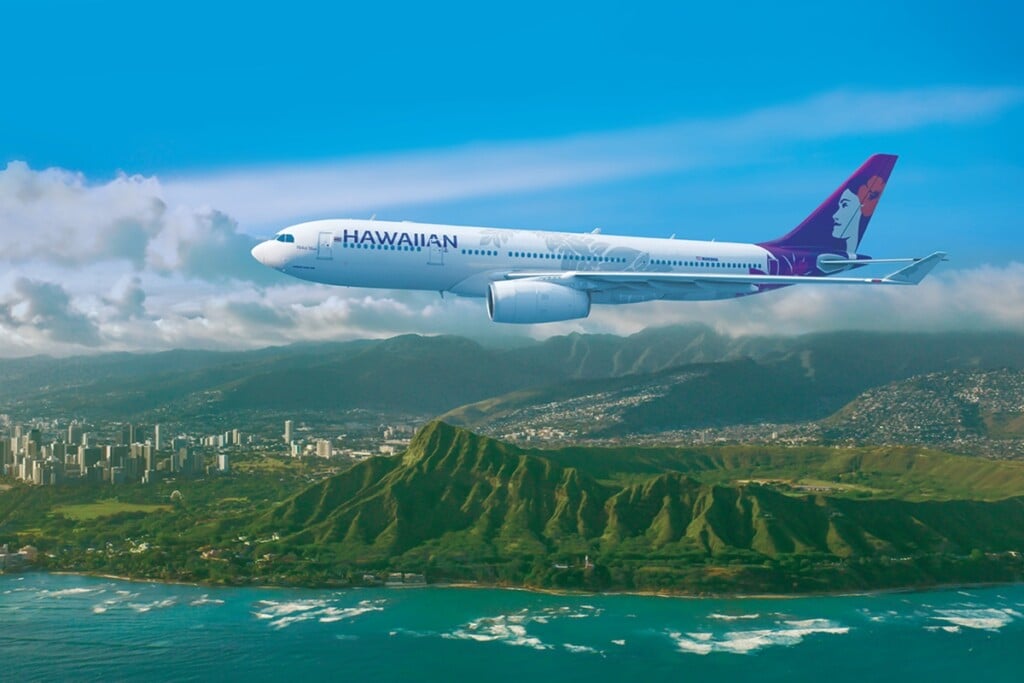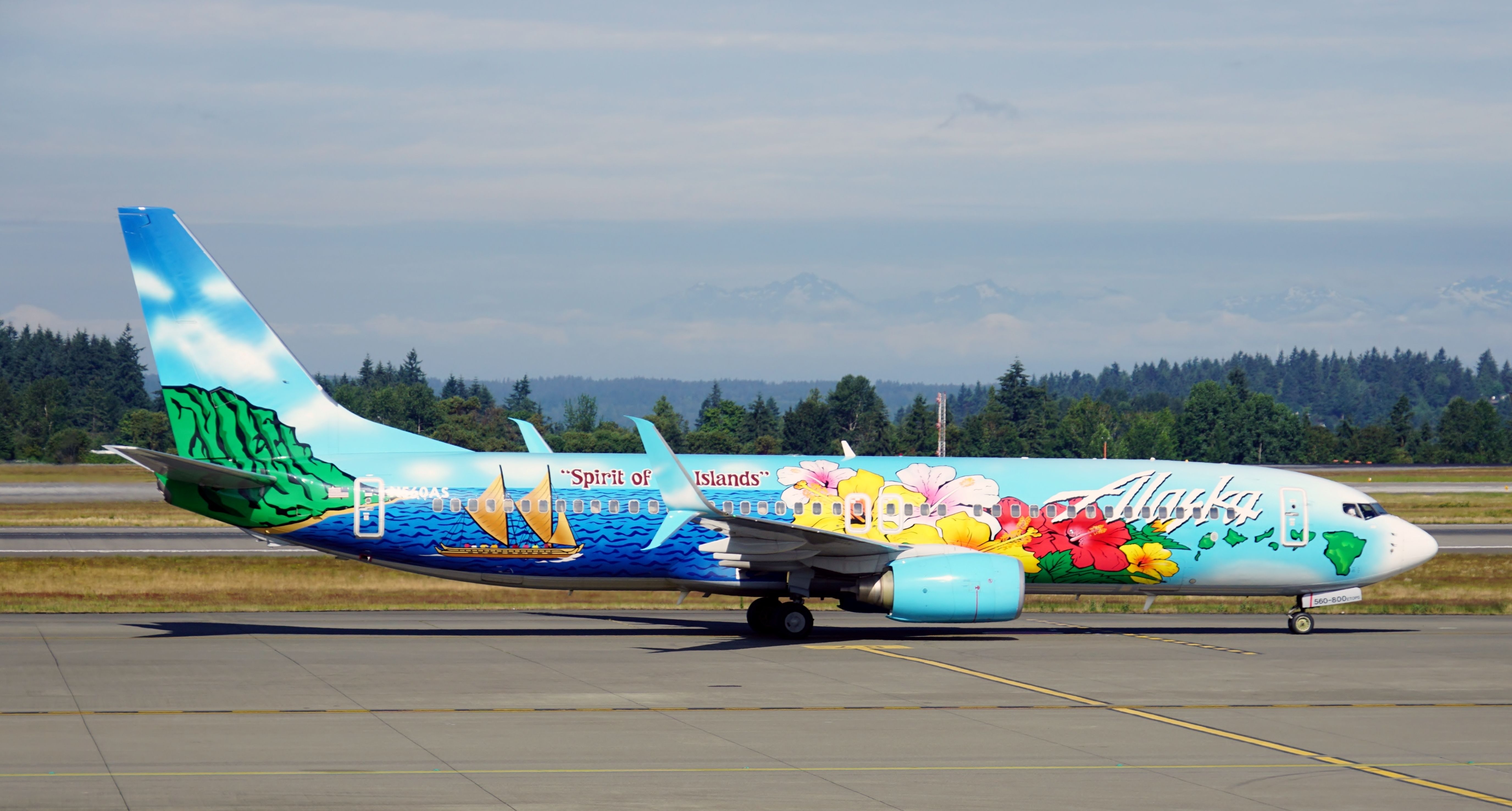Hawaiian Airlines and Alaska Airlines

Hawaiian Airlines and Alaska Airlines are two prominent airlines operating in the United States, serving a wide range of destinations across the country and internationally. Both airlines have distinct characteristics and cater to different travel needs. This comparison delves into their route networks, loyalty programs, fare classes, and in-flight experiences to help travelers make informed decisions.
Route Networks
The route networks of Hawaiian Airlines and Alaska Airlines are quite different, reflecting their distinct geographical focuses. Hawaiian Airlines, as its name suggests, primarily serves destinations in Hawaii, with a focus on inter-island travel and connections to the mainland United States. Alaska Airlines, on the other hand, has a broader network that extends across the western United States, Alaska, Canada, and Mexico, with a significant presence in the Pacific Northwest.
- Hawaiian Airlines operates a network of flights primarily focused on Hawaii, connecting major cities on the islands with each other and with the mainland United States. It offers direct flights from various cities on the West Coast, including Los Angeles, San Francisco, Seattle, and Portland, to major Hawaiian airports like Honolulu International Airport (HNL), Kahului Airport (OGG), and Lihue Airport (LIH). The airline also has limited international routes to Asia, including Tokyo and Seoul.
- Alaska Airlines has a more extensive network, spanning across the western United States, Alaska, Canada, and Mexico. It serves major hubs like Seattle-Tacoma International Airport (SEA), Anchorage International Airport (ANC), and Portland International Airport (PDX), offering connections to numerous destinations within its coverage area. The airline also operates flights to destinations in the Caribbean, Central America, and South America.
Loyalty Programs
Both Hawaiian Airlines and Alaska Airlines have loyalty programs that reward frequent flyers with benefits like miles, upgrades, and special perks. However, the programs differ in their earning and redemption options, offering unique advantages to members.
- Hawaiian Airlines’ loyalty program, HawaiianMiles, allows members to earn miles on flights with Hawaiian Airlines and its partner airlines. Miles can be redeemed for flights, upgrades, and other travel-related rewards. The program offers various tiers, with higher tiers unlocking additional benefits like priority boarding, free checked baggage, and lounge access.
- Alaska Airlines’ loyalty program, Mileage Plan, also offers miles for flights with Alaska Airlines and its partners. Members can redeem miles for flights, upgrades, and other travel rewards. Mileage Plan has different tiers, with higher tiers offering benefits like priority boarding, free checked baggage, and lounge access. Additionally, the program allows members to transfer miles to other loyalty programs, providing flexibility in redemption options.
Fare Classes
Hawaiian Airlines and Alaska Airlines offer different fare classes, each with varying amenities and price points. Travelers can choose the fare class that best suits their budget and preferences.
- Hawaiian Airlines offers four fare classes: Main Cabin, Extra Comfort, Premium Cabin, and First Class. Main Cabin is the basic fare class, while Extra Comfort provides additional legroom and other amenities. Premium Cabin offers enhanced comfort and amenities, while First Class provides the most luxurious experience with lie-flat seats and premium service.
- Alaska Airlines offers four fare classes: Economy, Premium Class, First Class, and Business Class. Economy is the basic fare class, while Premium Class provides additional legroom and other amenities. First Class offers enhanced comfort and amenities, while Business Class provides the most luxurious experience with lie-flat seats and premium service.
In-Flight Experience
The in-flight experience on Hawaiian Airlines and Alaska Airlines differs in aspects like seat comfort, entertainment options, and food and beverage services.
- Hawaiian Airlines offers comfortable seats in all fare classes, with additional legroom in Extra Comfort and Premium Cabin. The airline provides a selection of entertainment options, including movies, TV shows, and music. Food and beverage services vary depending on the flight duration and fare class, with snacks and drinks offered in Main Cabin and meals served in Extra Comfort, Premium Cabin, and First Class.
- Alaska Airlines also offers comfortable seats in all fare classes, with additional legroom in Premium Class and First Class. The airline provides a selection of entertainment options, including movies, TV shows, and music. Food and beverage services vary depending on the flight duration and fare class, with snacks and drinks offered in Economy and meals served in Premium Class, First Class, and Business Class.
Competition and Market Dynamics

The airline industry is highly competitive, with numerous players vying for market share. Hawaiian Airlines and Alaska Airlines operate in distinct geographic regions, facing unique competitive pressures.
Key Competitors
The key competitors for Hawaiian Airlines and Alaska Airlines vary depending on the specific routes and markets they serve.
- Hawaiian Airlines primarily competes with other airlines serving the Hawaiian Islands, including:
- Southwest Airlines: A low-cost carrier that offers flights to Hawaii from the mainland U.S.
- United Airlines: A major carrier with a significant presence in the Hawaiian market.
- American Airlines: Another major carrier with a presence in Hawaii.
- Alaska Airlines competes with other airlines serving the West Coast of the U.S., including:
- Southwest Airlines: A major competitor in the West Coast market.
- Delta Air Lines: A major carrier with a significant presence on the West Coast.
- United Airlines: Another major carrier with a presence on the West Coast.
Impact of Mergers and Acquisitions, Hawaiian airlines alaska
Mergers and acquisitions have significantly impacted the airline industry, leading to consolidation and increased competition.
- The merger of Alaska Airlines and Virgin America in 2016 created a larger airline with a broader network and increased market share.
- The merger of Southwest Airlines and AirTran Airways in 2011 strengthened Southwest’s position as a low-cost carrier.
- These mergers have led to increased competition for Hawaiian Airlines and Alaska Airlines, as they now face larger and more diversified competitors.
Role of Low-Cost Carriers
Low-cost carriers (LCCs) have played a significant role in shaping the airline industry.
- LCCs, such as Southwest Airlines and Spirit Airlines, have disrupted the traditional airline model by offering lower fares and basic services.
- LCCs have forced traditional carriers, like Hawaiian Airlines and Alaska Airlines, to adjust their pricing and service offerings to remain competitive.
- Hawaiian Airlines and Alaska Airlines have responded to the LCC challenge by offering their own low-cost options, such as basic economy fares and increased frequency of flights on popular routes.
Strategies to Attract and Retain Customers
Hawaiian Airlines and Alaska Airlines employ various strategies to attract and retain customers in a competitive market.
- Loyalty Programs: Both airlines offer frequent flyer programs that reward customers for their loyalty with benefits such as free flights, upgrades, and other perks.
- Customer Service: Both airlines prioritize excellent customer service, providing friendly and helpful staff, efficient operations, and convenient amenities.
- Value-Added Services: Both airlines offer value-added services, such as in-flight entertainment, Wi-Fi, and food and beverage options, to enhance the customer experience.
- Strategic Partnerships: Both airlines have entered into strategic partnerships with other airlines to expand their networks and offer more travel options to customers.
- Targeted Marketing: Both airlines utilize targeted marketing campaigns to reach specific customer segments and promote their unique offerings.
Industry Trends and Future Outlook: Hawaiian Airlines Alaska

The airline industry is constantly evolving, driven by technological advancements, shifting consumer preferences, and economic fluctuations. Hawaiian Airlines and Alaska Airlines, like other players in the industry, face both challenges and opportunities in this dynamic environment.
Sustainable Aviation
Sustainable aviation practices are gaining traction, driven by environmental concerns and increasing regulatory pressure. Airlines are exploring various options, including biofuels, fuel-efficient aircraft, and carbon offsetting programs. Hawaiian Airlines, known for its focus on connecting to Hawaii, is particularly impacted by the need to reduce emissions due to its island-hopping routes. Alaska Airlines has also been proactive in sustainability initiatives, aiming to reduce its carbon footprint through various programs and partnerships.
Technological Advancements
Technology is transforming the travel experience, from online booking and mobile check-in to personalized services and advanced data analytics. Airlines are leveraging technology to optimize operations, enhance customer experience, and gain a competitive edge. Hawaiian Airlines, for example, has implemented self-service kiosks and mobile boarding passes, streamlining the check-in process. Alaska Airlines has also embraced technology, introducing features like seat selection and baggage tracking through its mobile app.
Economic Impact
Economic factors, such as inflation and fuel prices, significantly impact the airline industry. Rising fuel costs directly affect operational expenses, while inflation influences consumer spending patterns and airfare pricing strategies. Hawaiian Airlines, with its geographically isolated market, is particularly vulnerable to fuel price fluctuations. Alaska Airlines, operating in a more diverse market, may have some buffer against these challenges.
Financial Performance
| Year | Hawaiian Airlines | Alaska Airlines |
|---|---|---|
| 2022 | $1.5 billion | $5.8 billion |
| 2021 | $1.1 billion | $4.6 billion |
| 2020 | $0.7 billion | $3.2 billion |
Hawaiian airlines alaska – Hawaiian Airlines and Alaska Airlines are both major carriers that offer service to the beautiful islands of Hawaii. While Hawaiian Airlines is known for its focus on the Hawaiian market, alaska airlines hawaii provides a great alternative for travelers seeking a convenient and affordable way to reach paradise.
Both airlines offer a range of services and amenities, ensuring a comfortable and enjoyable journey to the Aloha State.
Hawaiian Airlines and Alaska Airlines are both popular choices for travelers seeking connections to the Pacific Northwest. While Hawaiian Airlines focuses on flights to Hawaii, Alaska Airlines offers a wider network, including routes to destinations like Seattle, Portland, and Anchorage.
If you’re flying Alaska Airlines and connecting through Chicago’s O’Hare International Airport (ORD), be sure to check out alaska airlines terminal ord for a smooth and efficient transfer. This knowledge will come in handy if you’re planning a multi-leg trip with Hawaiian Airlines, as they often partner with Alaska Airlines for seamless connections.
